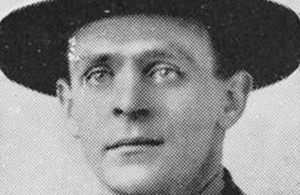WW1 New Zealand VC recipient John Gildroy Grant
The story of New Zealand First World War Victoria Cross recipient John Gildroy Grant.

John Gildroy Grant [© IWM (detail of VC 482)]
16 men from New Zealand received the Victoria Cross, Britain’s highest award for gallantry, during the First World War. As part of the Centenary Commemorations the people of the United Kingdom marked their gratitude to those courageous men by presenting a bronze memorial plaque to their home country engraved with their names. The plaque is now displayed in the grounds of the New Zealand Parliament, Wellington. This archive tells their stories.
Name: John Gildroy Grant
DOB: 26 August 1889
Place of Birth: Hawera, Taranaki, New Zealand
Date of Action: 1 September 1918
Place of Action: near Bancourt, France
Rank: Sergeant
Regiment: Ist Battalion, Wellington Infantry Regiment, New Zealand Expeditionary Force
John Gildroy Grant was born on 26 August 1889 in Hawera, New Zealand. He was working as a builder before enlisting in the New Zealand Expeditionary Force in October 1915.
Sergeant Grant was awarded his Victoria Cross for his actions with the Wellington Infantry Regiment on 1 September 1918 during the advance to Bancourt in France when his Battalion was attempting to capture a ridge. His citation explains further:
For most conspicuous bravery and devotion to duty near Bancourt on the 1st September, 1918, when Serjeant in command of a platoon forming part of the leading waves of the battalion attacking the high ground to the east of Bancourt. On reaching the crest, it was found that a line of five enemy machine-gun posts offered a serious obstacle to further advance. Under point blank fire, however, the company advanced against these posts. When about twenty yards from the posts Sjt. Grant, closely followed by a comrade, rushed forward ahead of his platoon, and with great dash and bravery entered the centre post, demoralising the garrison and enabling the men of his platoon to mop up the position. In the same manner he then rushed the post on the left and the remaining posts were quickly occupied and cleared by his company. Throughout the whole operation on this and the two previous days Sjt. Grant displayed coolness, determination, and valour of the highest order, and set a splendid example to all.
After the war, Grant returned to work as a builder in New Zealand, and continued to be involved in the Territorial Force. He died in 1970.